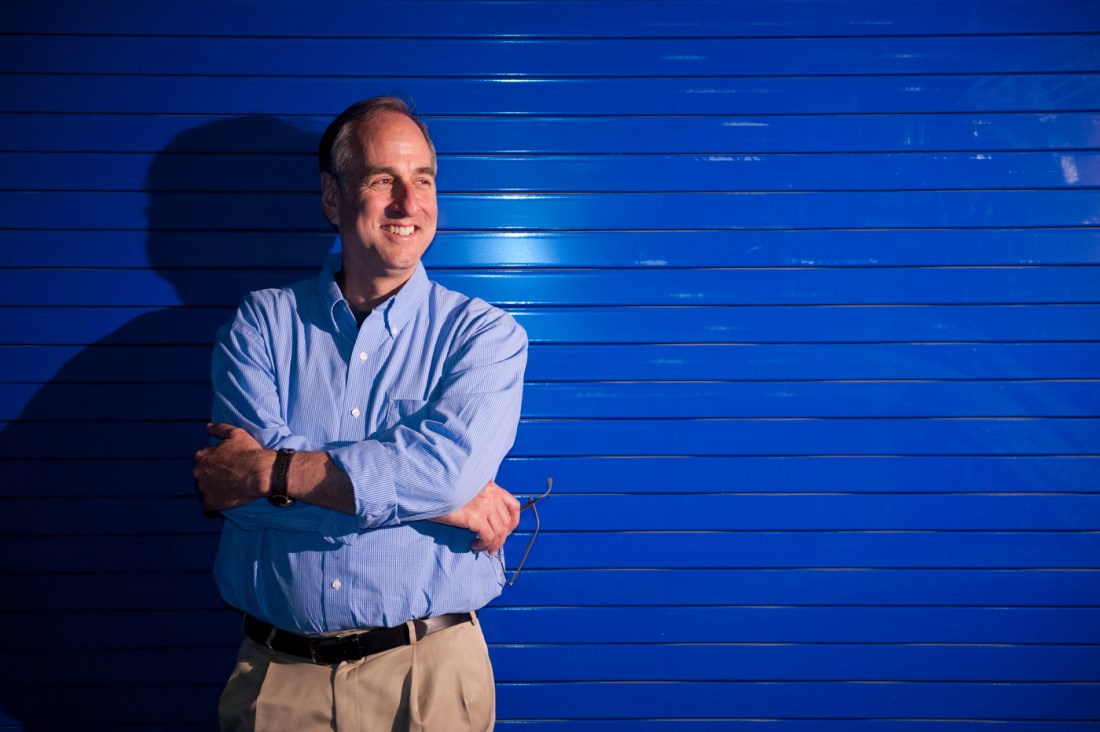Scientists have named and described about 245,000 accepted marine species, according to the World Registry of Marine Species. Over the next 10 years, a new, collaborative initiative called Ocean Census hopes to add at least 100,000 to that number.
Northeastern University’s Ocean Genome Legacy Center (OGL) is one of the founding partners of this initiative.
While that number — 245,000 — might sound large in isolation, Dan Distel, who is a research professor in marine and environmental sciences at Northeastern University and the director of the Ocean Genome Legacy Center, says that, when it comes to terrestrial species, scientists have named closer to 2 million.
“The truth is, most of the diversity in the marine environment is very hard to access,” says Distel. “All our technology helps, but still, I think it’s very fair to say that nearly every single major marine expedition, when they go into the deep sea, they find new species.”
“There’s a lot of debate as to what fraction of the total diversity has been described,” Distel continues. “To be very conservative, I would say at least 75% of the diversity on Earth has not been adequately described.”

“Only a small fraction of the species that we believe are in the ocean even have names. And of those that have names, many of them are poorly documented.”
The Ocean Census project aims to fill some of those gaps in our understanding of marine environments.
Ocean Census is a natural extension of the work done by the OGL, which has as its mission to store and “make available tissue and DNA samples from all manner of marine organisms, to accelerate and enable research that’s desperately needed to protect our oceans,” Distel says, “and also to, in general, improve the quality of life for people.”
The OGL is now in its 20th year and is located at Northeastern University’s Marine Science Center in Nahant, Massachusetts.
The OGL serves as a partner with Ocean Census, contributing “intellectually to the development of the initiative,” Distel wrote in a follow-up email, along with other global partners ranging from universities to marine and environmental institutes.
The Ocean Census project will accelerate not only communication between scientists, but it will also streamline the often lengthy process of identifying unique species.
The taxonomic process — that is, the scientific description and naming of an organism, usually culminating in two Latin terms, like Homo sapiens (humans) or Canis familiaris (the domestic dog) — takes, on average, 13.5 years, according to a paper describing Ocean Census, published in Frontiers in Marine Science.
But the process, which includes a detailed description of the organism, can take much, much longer than that average, Distel says.
One of Ocean Census’ primary goals is to accelerate this process, which concludes with an official Latin name and adds a new, described species to science’s communal understanding.
Previously, taxonomists have relied primarily on so-called “voucher specimens,” a representative individual of a particular species, lodged in a particular museum for later reference.
The problems with this approach are multifold, Distel says, including difficulties of access — “I can’t run off to a museum in Germany whenever I want to and look at an obscure sample,” Distel quips — and how to be sure the specimen really is representative.
“If you look at a juvenile of a certain species, it may look very, very different from a mature individual from that species,” Distel says.
Think of tadpoles and adult frogs — without direct observation of tadpoles growing into their adult forms, it would be very difficult to know they were the same species. Technologies like genetic sequencing, now more widely available and less expensive than at their inception, solve this problem.
Similarly, illness in a specimen can distort scientists’ observations, causing false identifications of “new” species.
For that matter, knowing with confidence that a “discovered” species is unique within a catalog of 245,000 (or 2 million) is a challenge unto itself, Distel points out. Gaining this confidence can require countless hours hunting through scientific literature — going back to the 1700s — to ensure that a new discovery really is new.
Digital databases and sample libraries, like the Ocean Census and the OGL, can accelerate this kind of research by an order of magnitude.

Distel jokes that “taxonomy is the oldest profession, because after God created the world, he gave Adam the task of naming all the animals — and we’ve been doing it ever since.”
Ocean Census promises to solve these obstacles by leveraging new technologies, like genetic sequencing and micro-computed tomography (“kind of like a 3D x-ray,” Distel says) and facilitating the rapid exchange of information between scientists.
But why is taxonomy such an important endeavor? Why invest so many resources into pure description?
Distel argues that “the most important ingredient in protecting the planet is knowledge.” Increasing the understanding of Earth’s biodiversity and identifying how that biodiversity interacts with its environment increases humanity’s ability to protect all aspects of the planet.
Most of the species in the ocean remain unknown, Distel says, and even “if they’ve been seen, we don’t know how they feed, how they reproduce, what their lifespans are, what they eat, what they require in the environment to survive.”
The taxonomic process is more than just a name — it entails as complete a description of a living thing as possible, creating a foundation of knowledge from which to answer a whole host of important questions around sustainability and environmental protections.
The efforts of biodiversity projects like Ocean Census add to that foundational information accessible to scientists so that they can make better recommendations regarding fishing regulations, the design of marine protected areas, the regulating of waste elimination in the oceans and much more, Distel enumerates.
“All the money in the world can’t save our planet if we don’t have the knowledge to back it up,” he concludes.
How likely are they to reach their goal of 100,000? Well, Distel says that they have already discovered “species number one.”
Noah Lloyd is a Senior Writer for NGN Research. Email him at n.lloyd@northeastern.edu. Follow him on X/Twitter at @noahghola.
